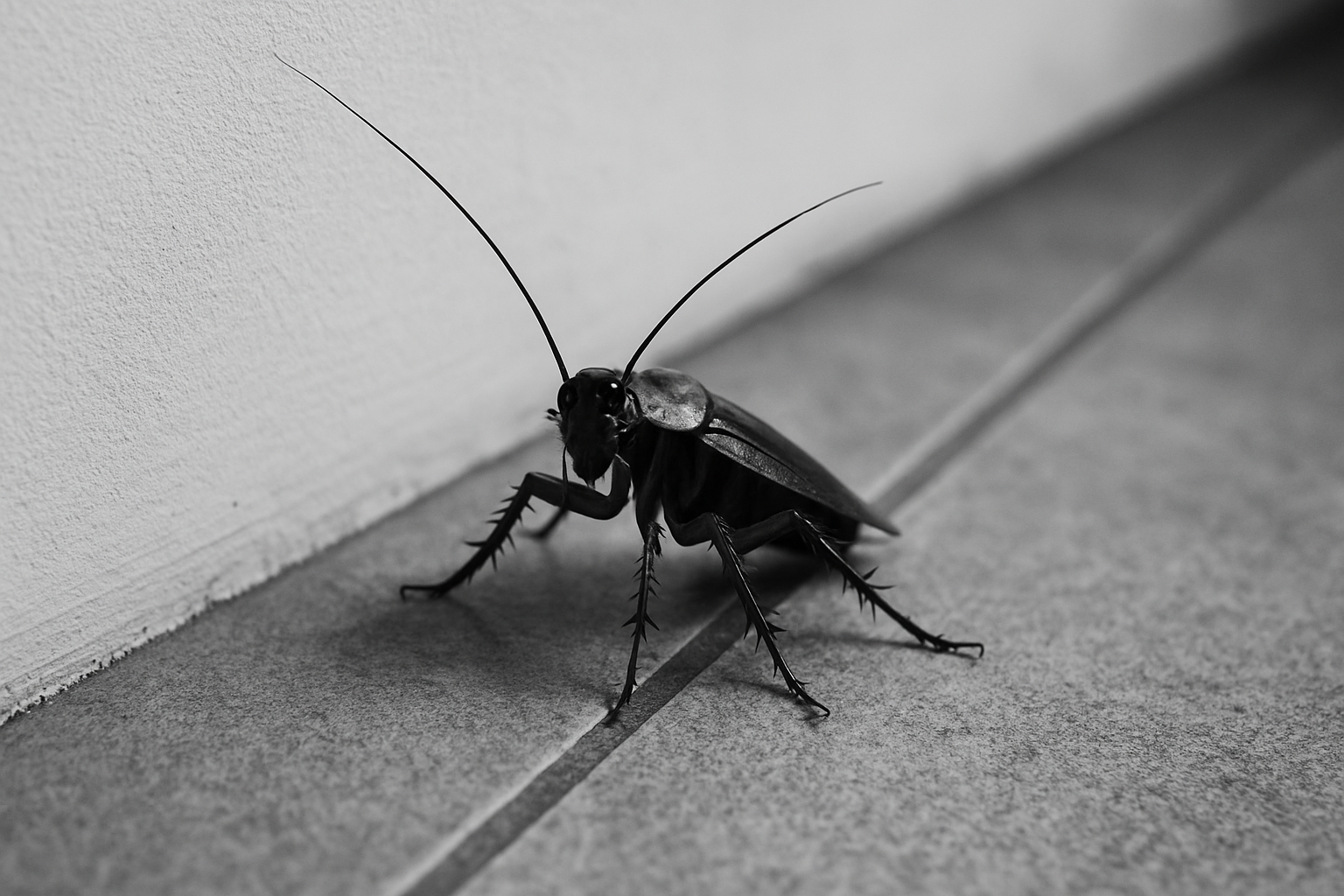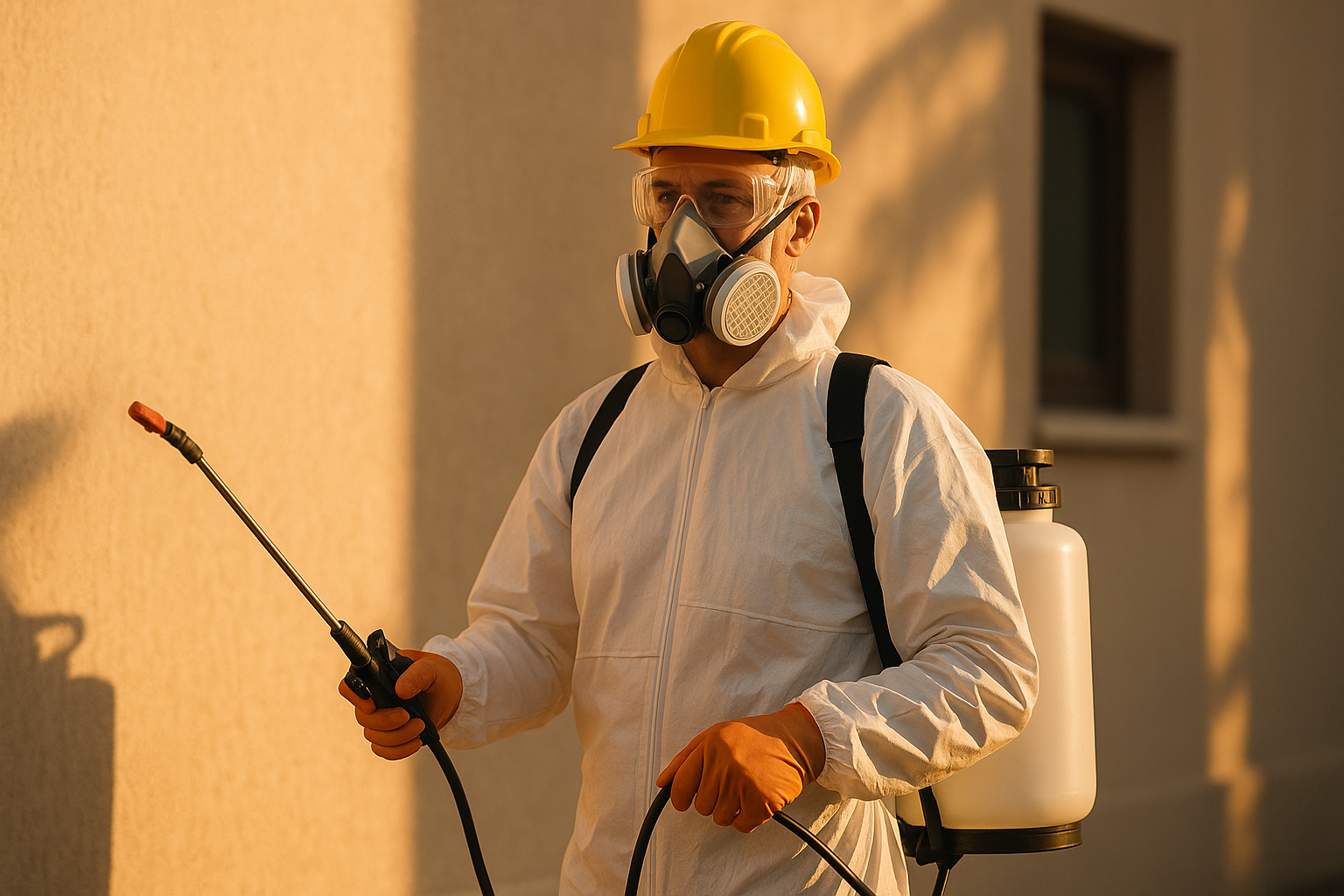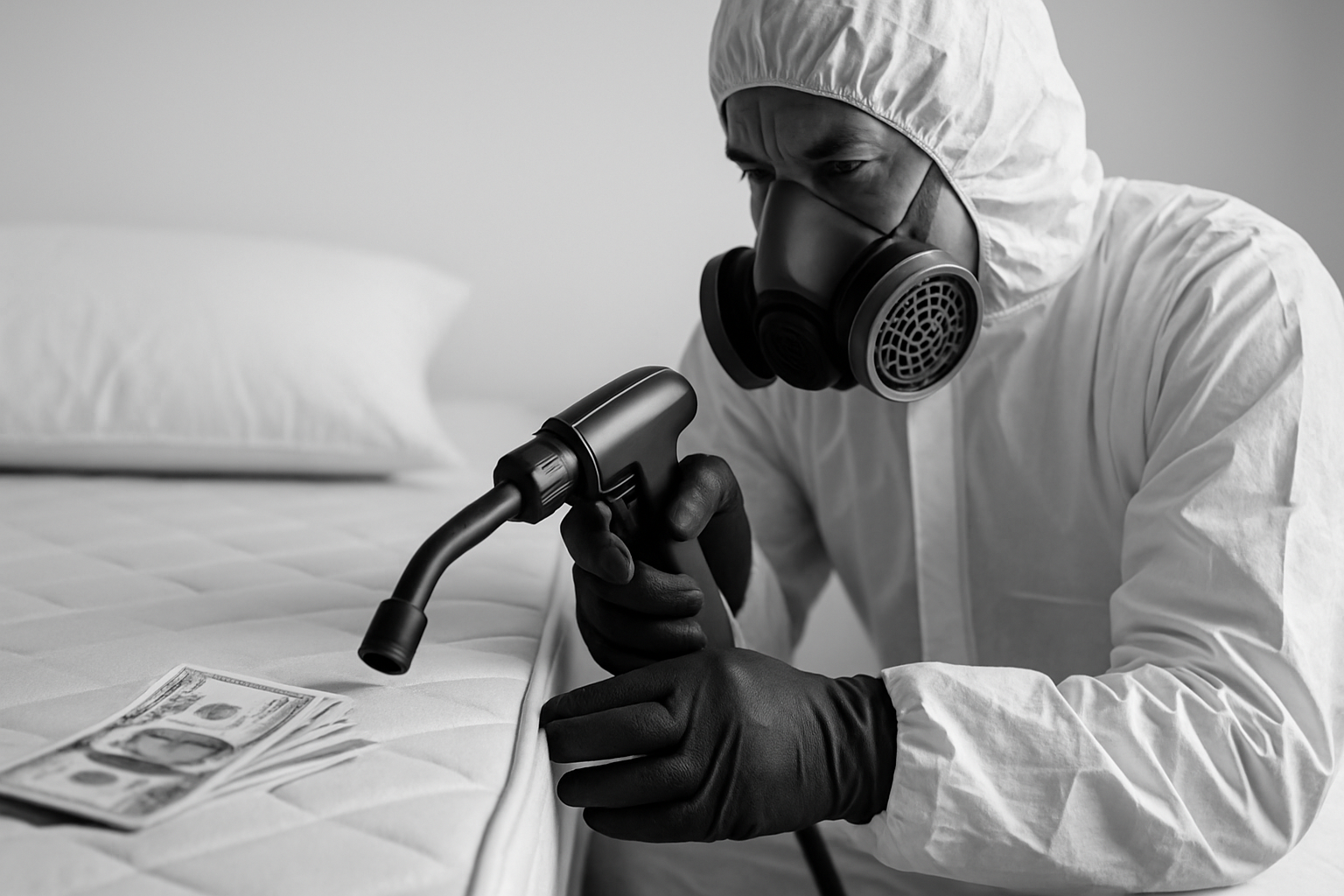Table of Contents
Cockroach Basics: Understanding the Common Species
Cockroach identification in Dubai starts with recognizing the most common species found across Business Bay, Dubai Marina, and Arabian Ranches and its localities such as Business Bay, Dubai Marina, and Arabian Ranches. In Dubai’s warm climate, several cockroach species thrive, typically the German cockroach (Blattella germanica), American cockroach (Periplaneta americana), and Oriental cockroach (Blatta orientalis). Because of Dubai’s climate, routine cockroach identification is essential to prevent small infestations from turning into major problems.
The German cockroach is the smallest but the most common indoor pest in homes and commercial establishments. It prefers warm, humid environments often found in kitchens and bathrooms. Meanwhile, the American cockroach is larger and often found in moist, dark outdoor areas but may enter buildings. The Oriental cockroach is darker and generally favors cooler, damper sites such as basements and drainage areas in Dubai’s urban buildings.
Physical Identification Characteristics
Identifying cockroaches accurately requires close observation of their physical traits. The identification process focuses on size, color, wing development, and body shape. Accurate cockroach identification in Dubai allows pest control professionals to select the most effective treatment. These traits are the foundation of professional cockroach identification in Dubai, ensuring species-specific treatments.
- Size: German cockroaches are about 13–16 mm long, American cockroaches can reach up to 40 mm, while Oriental cockroaches are medium-sized around 20–27 mm.
- Color: German cockroaches are light brown with two dark stripes behind the head; American cockroaches have reddish-brown bodies with a yellowish margin on the thorax; Oriental cockroaches appear shiny black or dark brown.
- Wings: American and German cockroaches have fully developed wings, but only American cockroaches fly occasionally. Oriental cockroaches have small, underdeveloped wings and do not fly.
- Body shape: Cockroaches have flattened, oval-shaped bodies enabling them to squeeze into narrow cracks and crevices common in Dubai’s architecture.
Side-by-Side Look-Alikes: Cockroaches vs Beetles and Water Bugs
It is easy to confuse cockroaches with other insects such as beetles and water bugs common in Dubai’s environment. Knowing the differences aids proper cockroach identification in Dubai and ensures appropriate pest control methods are applied.
| Insect | Body Shape | Legs | Wings | Common Habitat | Remarks |
|---|---|---|---|---|---|
| Cockroaches | Flattened, oval | 6 legs with long spines | Usually present; flying species common (e.g. American) | Indoor kitchens, drains, bathrooms | Active at night; emit distinctive odor |
| Beetles | Hard, convex elytra covering wings | 6 legs usually less spiny | Wings evolve as hard covers; only some fly | Varied: plants, wood, stored food | No distinctive odor; slow movers |
| Water Bugs (Giant water bugs) | Flattened, broader abdomen | Front legs adapted for grasping prey | Wings present; strong fliers | Near freshwater bodies | Not household pests; occasional indoor entry |
To distinguish a cockroach, look for its flattened body, quick movements, and nocturnal activity. Beetles tend to be harder and heavier bodied, while water bugs are larger and usually aquatic.
Gallery of Common Cockroaches in Dubai
Visual aids assist greatly in identifying cockroaches. Below are details of three major species found in Dubai:
German Cockroach
- Size: Small (13–16 mm)
- Color: Light brown with two distinctive dark stripes on the pronotum
- Wing: Fully winged but rarely flies
- Habitat: Kitchens, bathrooms, and restaurants in Downtown Dubai and Medos
American Cockroach
- Size: Large (up to 40 mm)
- Color: Reddish-brown with yellow figure-8 pattern on thorax
- Wing: Fully developed; capable of flight
- Habitat: Drains, sewers, and basements in Dubai Marina and Nad Al Sheba
Oriental Cockroach
- Size: Medium (20–27 mm)
- Color: Shiny black or very dark brown
- Wing: Reduced wings, does not fly
- Habitat: Cool and damp places like basements and underground areas in Business Bay
Behavior and Habitats
Cockroaches are nocturnal insects that prefer dark, moist areas where food and water are accessible. Understanding their behavior and preferred habitats in Dubai’s urban settings helps pinpoint infestations early.
They burrow into cracks near sinks, pipe joints, behind kitchen appliances, and areas where organic waste accumulates. Dubai’s humid climate in areas such as Arabian Ranches and Medos further encourages their presence year-round.
They reproduce quickly, with German cockroaches laying multiple egg cases during their lifecycle, enabling fast population growth. Their adaptability to various environments, including high-rise buildings and compound housing, makes control challenging.
Health and Sanitation Risks
Accurate cockroach identification is vital because cockroach presence is not just a nuisance but poses significant health risks. They can contaminate food and surfaces with bacteria, viruses, and allergens common in Dubai’s indoor environments.
- Allergic reactions: Proteins from cockroach feces and body parts can trigger asthma and allergies, particularly in children.
- Pathogen transmission: Cockroaches can carry pathogens causing diseases such as salmonella, E. coli infections, and gastroenteritis.
- Food contamination: They forage on waste and can spread contamination quickly in kitchens and food preparation areas.
Dubai Municipality’s Public Health Pest Control Section highlights the importance of effective control to protect public health and maintain hygiene standards in residential and commercial buildings.
Local Regulations and Control Measures
Dubai enforces rigorous pest control guidelines under Dubai Municipality and related authorities to manage cockroach infestations, particularly in food establishments and healthcare facilities.
Inspections and compliance are mandatory for businesses to ensure safe environments according to Dubai Health & Safety standards. Failure to comply can lead to penalties and closure orders.
Regulation also covers proper waste management and building maintenance to minimize cockroach habitats. Residents are encouraged to maintain cleanliness and report infestations promptly to authorized pest control providers. Dubai Municipality requires licensed companies to perform proper cockroach identification before carrying out treatments, ensuring compliance with safety standards.
Pest Control Options in Dubai
In Dubai, cockroach control requires professional intervention for effective results. Several trusted companies like Saniex Dubai specialize in integrated pest management tailored for local conditions.
Common pest control approaches include:
- Inspection and Cockroach Identification in Dubai: A comprehensive evaluation to determine species and infestation extent before treatment.
- Sanitation and Exclusion: Removing food and water sources, sealing entry points.
- Targeted Treatments: Use of baits, gels, and insecticides approved for use in Dubai.
- Monitoring and Follow-Up: Routine inspections to ensure long-term control.
Choosing licensed professionals complying with Dubai Municipality regulations is vital to ensure safe and effective pest management.
For more official guidance and services, visit Dubai Municipality Public Health Pest Control Section.
Frequently Asked Questions
How can I tell if I have cockroaches or beetles?
Cockroaches have a flattened oval body and long spiny legs, are fast movers, and are mostly active at night, emitting a musty odor. Beetles have hard, rounded covers (elytra) over their wings and move slower without odors.
Are cockroaches dangerous to health?
Yes, they can cause allergic reactions and spread disease-causing pathogens by contaminating food and surfaces.
What areas in Dubai are most prone to cockroach infestations?
Places with moisture and food residues like kitchens, bathrooms, restaurants in areas such as Downtown Dubai, Dubai Marina, and Business Bay.
Can I control cockroaches myself?
While sanitation and basic measures help, professional pest control is recommended for effective, lasting results in Dubai’s environment.
What should I look for when hiring pest control in Dubai?
Check for licensure, local experience, use of approved methods, and compliance with Dubai Municipality regulations.
Conclusion and Call to Action
Accurate cockroach identification in Dubai is the first step toward effective pest control and maintaining hygienic living and business environments. Knowing the common species, recognizing look-alikes, and understanding their behavior help residents and businesses act promptly.
Given health risks and rapid infestation potential, engaging licensed specialists such as Saniex in Dubai ensures tailored, safe, and regulatory-compliant solutions. Don’t wait for visible signs—early identification helps prevent costly and disruptive infestations.
Contact trusted Dubai pest control professionals today to safeguard your home or establishment and uphold Dubai’s high public health standards.
Key Features to Recognize Common Cockroach Species in Dubai
Effective pest control hinges on accurately recognizing cockroach species. Understanding the physical characteristics, behaviors, and preferred environments of local cockroach species in Dubai is crucial for homeowners, businesses, and pest management professionals. Recognizing different cockroach types helps to implement targeted control measures aligned with Dubai Municipality guidelines and Dubai Health Authority (DHA) regulations to ensure safe living and working conditions throughout the city.
Common Cockroach Species Found in Dubai
Dubai’s hot, arid climate and bustling urban areas create an environment where some cockroach species thrive. While cockroaches are globally widespread, the species you are most likely to encounter in Dubai differ slightly from those in other regions of the UAE. The three primary species to be aware of in Dubai are:
- American Cockroach (Periplaneta americana): Despite its name, this species is common in Dubai, especially in sewer systems and damp basements in buildings located in areas such as Business Bay and Downtown Dubai.
- German Cockroach (Blattella germanica): This smaller species is notorious for infesting residential kitchens and restaurants, frequently found in neighborhoods like Dubai Marina and Arabian Ranches.
- Oriental Cockroach (Blatta orientalis): Known for preferring cooler and moist environments, it usually inhabits shaded outdoor areas or basements of buildings in Nad Al Sheba and surrounding communities.
Detailed identification of these species is the first step toward mitigating infestation risks, especially given Dubai’s high-density urban fabric where cross-contamination can quickly spread pests if not controlled timely following the standards laid out by Dubai Municipality’s pest control regulations.
Physical Characteristics That Aid Identification
Each cockroach species can be differentiated by size, color, shape, and wing structure. Here are key identification markers to look for during an inspection or sighting:
- Size: American cockroaches are the largest, ranging between 3 to 5 cm in length, whereas German cockroaches are much smaller, typically 1.1 to 1.6 cm long.
- Color: American cockroaches often have a reddish-brown body with yellow markings on the thorax. German cockroaches are light brown with two dark streaks running down their backs. Oriental cockroaches are darker, almost black, with a glossy finish.
- Wings: Both American and German cockroaches have wings; however, American cockroaches have fully developed wings that cover their abdomen, allowing short flights. Oriental cockroaches have reduced wings, making them poor flyers.
- Shape and Texture: German cockroaches appear more slender and have a shiny, smooth body. In contrast, American cockroaches have a broader, more robust appearance with a slightly textured exoskeleton.
Identifying these physical characteristics accurately allows pest control technicians and facility managers in Dubai to classify infestations correctly and apply specialized treatments authorized by the Dubai Department of Economic Development (DED) and in compliance with the Dubai Municipality pest control protocols.
Behavioral Traits and Habitat Preferences
Beyond physical traits, knowing the typical behaviors and preferred habitats of cockroaches aids in identification and control. In Dubai’s urban environment, understanding where cockroaches hide and feed can improve detection and prevention strategies.
- German Cockroaches: Highly adaptive to indoor environments, particularly kitchens, pantries, and bathrooms. They thrive in moist, warm places, commonly hiding in cracks, behind appliances, and inside cabinetry in areas like Jumeirah and Business Bay.
- American Cockroaches: Prefer damp, warm environments such as sewers, storm drains, and moist basements. However, they frequently invade commercial kitchens and food processing facilities, especially in the industrial zones of Dubai South.
- Oriental Cockroaches: Tend to be outdoors near decaying organic matter but can enter basements or ground floors through drainage systems or cracks. These cockroaches dominate shaded and humid areas such as landscaped parks and gardens across Nad Al Sheba.
Behavioral understanding is essential not only for identification but also for complying with the Dubai Health & Safety Code, which mandates regular pest inspections in commercial kitchens and healthcare facilities to minimize public health risks.
Common Mistakes in Cockroach Identification
Misidentifying cockroach species can result in improper pest control methods and prolonged infestations. Some common pitfalls include:
- Confusing cockroaches with beetles or other crawling insects, due to their similar size and shape.
- Assuming all cockroaches are the fast-moving German type when larger species, like the American cockroach, may be present but less frequently seen during daylight.
- Ignoring nymph stages, which look quite different without wings and can be mistaken for other small insects.
To avoid these errors, pest professionals in Dubai rely on a combination of visual inspection, sticky traps regulated under Dubai Municipality’s Integrated Pest Management (IPM) guidelines, and where necessary, laboratory identification to confirm the species.
The Role of Dubai Municipality and DHA in Cockroach Identification and Control
In Dubai, identifying cockroach species is tightly linked to public health mandates. Dubai Municipality enforces stringent pest control standards that require businesses, especially food establishments, to monitor and manage pest presence regularly. The DHA supports these measures by providing health and safety certifications that often include pest management compliance.
Dubai-based pest control service providers like Saniex operate strictly within Dubai Municipality’s regulatory framework, ensuring that cockroach identification is part of their comprehensive inspection and treatment planning process. Through strategic identification, they help clients protect property and public health by tailoring approaches that address specific cockroach species encountered in diverse Dubai neighborhoods.
In summary, accurately recognizing cockroach species is fundamental to controlling infestations effectively in Dubai’s urban landscape. Recognizing the key species, their physical traits, habitats, and behaviors leads to more efficient and compliant pest management outcomes, keeping homes and businesses safe from the health hazards associated with cockroach infestations.





